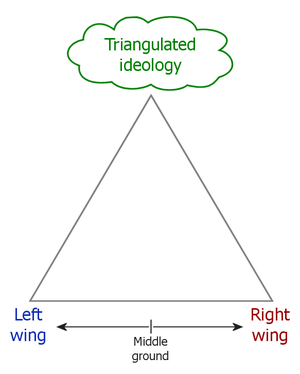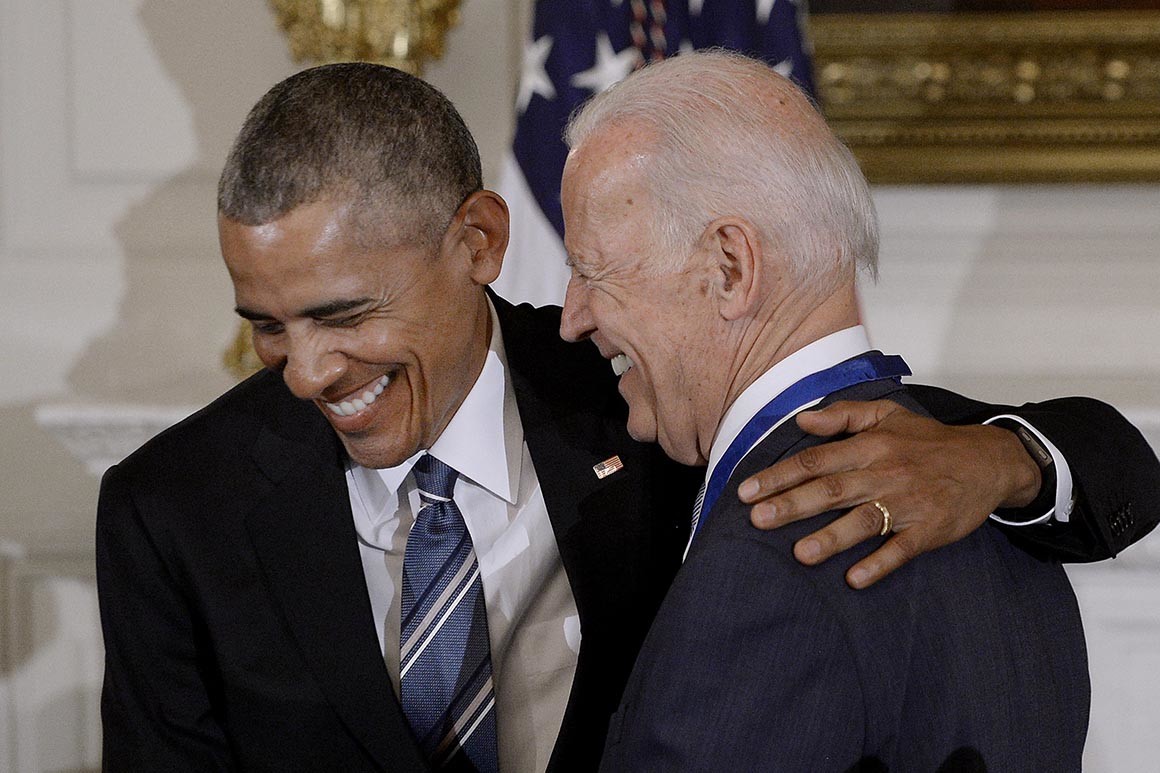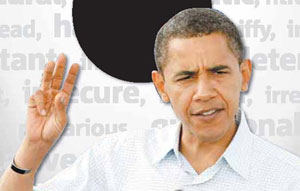 The name given to the act of a political candidate presenting his or her ideology as being “above” and “between” the “left” and “right” sides (or “wings”) of a traditional (e.g. UK or US) democratic “political spectrum”. It involves adopting for oneself some of the ideas of one’s political opponent (or apparent opponent). The logic behind it is that it both takes credit for the opponent’s ideas, and insulates the triangulator from attacks on that particular issue. Opponents of triangulation, who believe in a fundamental “left” and “right”, consider the dynamic a deviation from its “reality” and dismiss those that strive for it as whimsical.
The name given to the act of a political candidate presenting his or her ideology as being “above” and “between” the “left” and “right” sides (or “wings”) of a traditional (e.g. UK or US) democratic “political spectrum”. It involves adopting for oneself some of the ideas of one’s political opponent (or apparent opponent). The logic behind it is that it both takes credit for the opponent’s ideas, and insulates the triangulator from attacks on that particular issue. Opponents of triangulation, who believe in a fundamental “left” and “right”, consider the dynamic a deviation from its “reality” and dismiss those that strive for it as whimsical.
Source: Wikipedia
Obama: Triangulation 2.0?
Published on Monday, January 24, 2011 by The Nation by Ari Berman
Immediately following the Democrats’ 2010 electoral shellacking, a broad spectrum of pundits urged President Obama to “pull a Clinton,” in the words of Politico: move to the center (as if he wasn’t already there), find common ground with the GOP and adopt the “triangulation” strategy employed by Bill Clinton after the Democratic setback in the 1994 midterms. “Is ‘triangulation’ just another word for the politics of the possible?” asked the New York Times. “Can Obama do a Clinton?” seconded The Economist. And so on. The Obama administration, emphatic in charting its own course, quickly took issue with the comparison. According to the Times, Obama went so far as to ban the word “triangulation” inside the White House. Politico called the phrase “the dirtiest word in politics.”

































